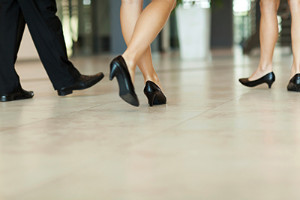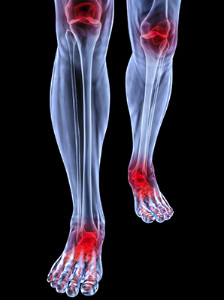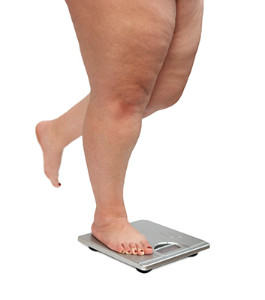 Recently in the UK a receptionist by the name of Nicola Thorpe, who works at a large accounting firm, was sent home for the day for not adhering to the company dress code. Her infraction: not wearing high heels to work. The dress code stipulates that women must “wear heels from 2 to 4 inches high.” Thorpe was not happy about this, so she started a petition. Over 154,000 signatures later, the Government Equalities Office and the Parliament have begun the process of addressing their constituents concerns. On March 6th the Parliament will debate the issue. There are many studies that have been done that show how wearing high heels can be detrimental to foot and ankle health. Nerve, ligament, and tendon damage could all result from prolonged wear.
Recently in the UK a receptionist by the name of Nicola Thorpe, who works at a large accounting firm, was sent home for the day for not adhering to the company dress code. Her infraction: not wearing high heels to work. The dress code stipulates that women must “wear heels from 2 to 4 inches high.” Thorpe was not happy about this, so she started a petition. Over 154,000 signatures later, the Government Equalities Office and the Parliament have begun the process of addressing their constituents concerns. On March 6th the Parliament will debate the issue. There are many studies that have been done that show how wearing high heels can be detrimental to foot and ankle health. Nerve, ligament, and tendon damage could all result from prolonged wear.
High heels have a history of causing foot and ankle problems. If you have any concerns about your feet or ankles, contact one of our podiatrists from Westside Podiatry Center, LLP. Our doctors can provide the care you need to keep you pain-free and on your feet.
Effects of High Heels on the Feet
High heels are popular shoes among women because of their many styles and societal appeal. Despite this, high heels can still cause many health problems if worn too frequently.
Which Parts of My Body Will Be Affected by High Heels?
- Ankle Joints
- Achilles Tendon – May shorten and stiffen with prolonged wear
- Balls of the Feet
- Knees – Heels cause the knees to bend constantly, creating stress on them
- Back – They decrease the spine’s ability to absorb shock, which may lead to back pain. The vertebrae of the lower back may compress.
What Kinds of Foot Problems Can Develop from Wearing High Heels?
- Corns
- Calluses
- Hammertoe
- Bunions
- Morton’s Neuroma
- Plantar Fasciitis
How Can I Still Wear High Heels and Maintain Foot Health?
If you want to wear high heeled shoes, make sure that you are not wearing them every day, as this will help prevent long term physical problems. Try wearing thicker heels as opposed to stilettos to distribute weight more evenly across the feet. Always make sure you are wearing the proper shoes for the right occasion, such as sneakers for exercising. If you walk to work, try carrying your heels with you and changing into them once you arrive at work. Adding inserts to your heels can help cushion your feet and absorb shock. Full foot inserts or metatarsal pads are available.
If you have any questions please feel free to contact one of our offices located in Liverpool, Camillus, Skaneateles, Oswego, and Cicero, NY . We offer the newest diagnostic and treatment technologies for all your foot and ankle needs.


